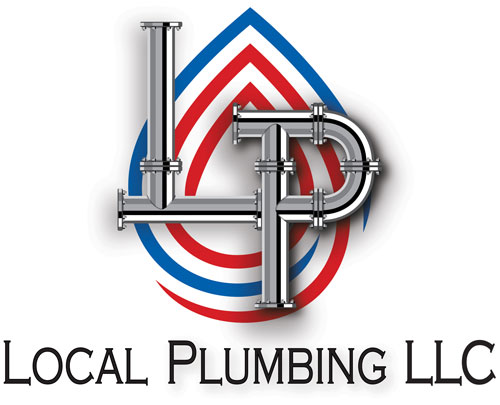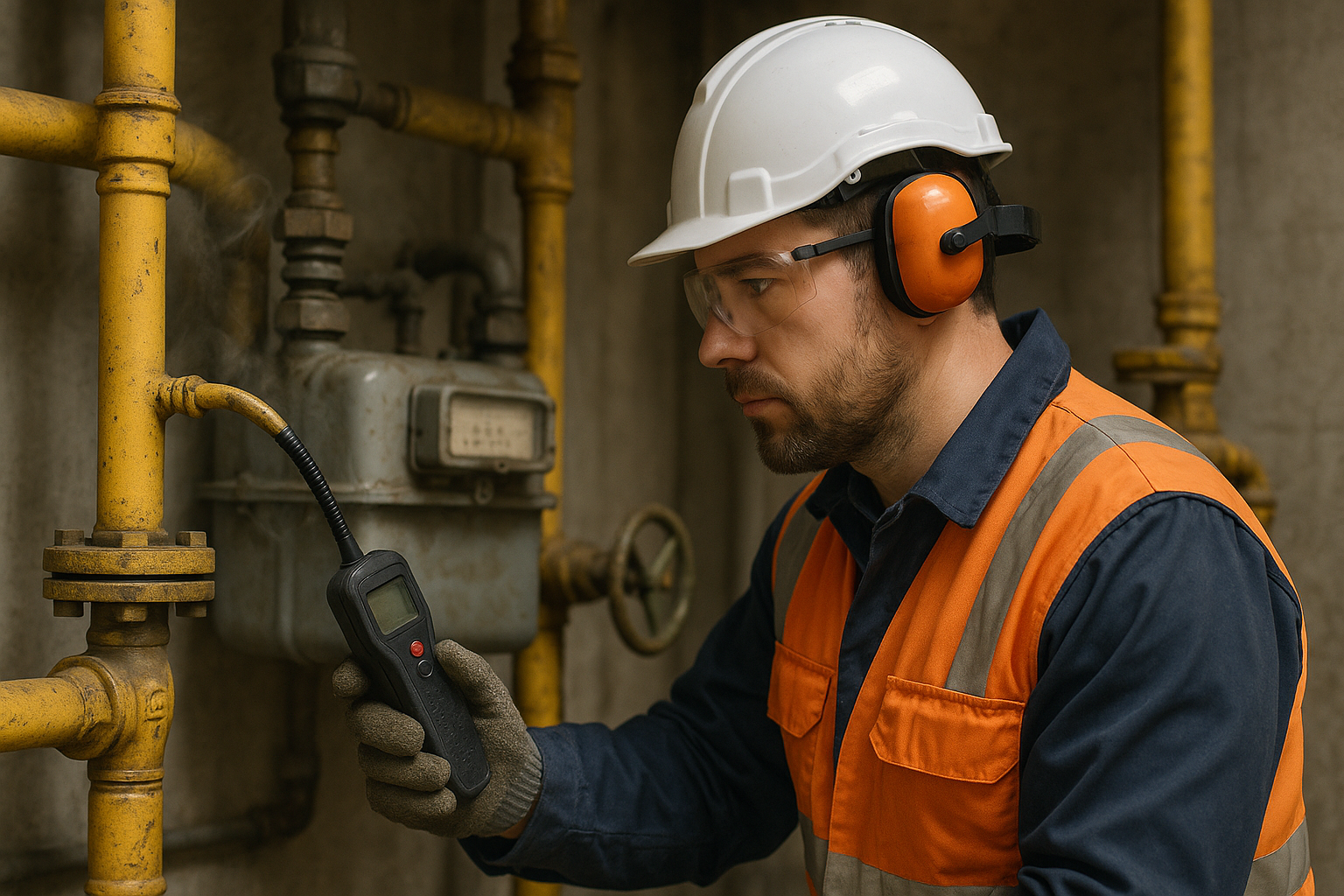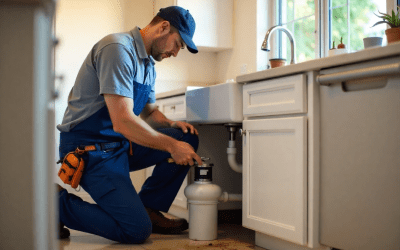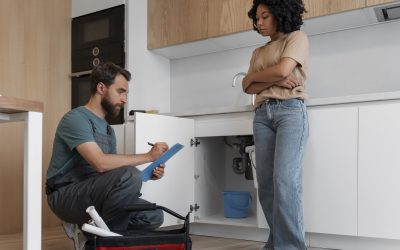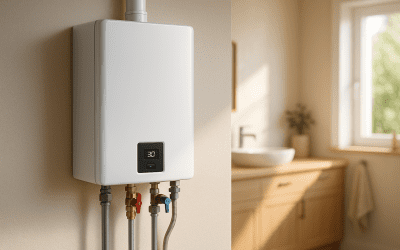In Schertz, TX, many families rely on natural gas for cooking, heating, and everyday comfort. But this convenience can quickly turn dangerous if a leak occurs. Even a small gas leak can threaten your health, raise fire risks, and spike utility bills. The problem is, most homeowners don’t realize how common leaks are, or how fast they can escalate. That’s why knowing the warning signs, understanding repair options, and calling in professionals when needed is so important.
In this guide, we’ll share practical advice tailored to gas leak detection & repair for Schertz homeowners to help you address gas leaks with confidence, keeping your home safe and your family protected.
Top Causes of Gas Leaks That Every Homeowner Should Know
Aging or Corroded Pipes
Metal gas lines (especially older ones) degrade over time due to rust, moisture, soil acidity, or environmental exposure. Corrosion weakens the pipe walls and causes holes or cracks that let gas escape.
Loose Fittings, Valves, or Connections
Even with good pipes, the joints, seals, and connections (at stoves, water heaters, or gas meters) can loosen or deteriorate. Temperature changes, vibrations, or normal wear and tear can cause fittings to fail.
Faulty or Poorly Maintained Appliances
Appliances like furnaces, ovens, water heaters, or dryers that run on gas are frequent sources of leaks when components inside them (hoses, burners, valves, pilot lights) are not kept in good working order or have defects.
Improper Installation or DIY Modifications
Incorrect piping, faulty seals, non-standard materials, or improper venting from mis-installation can create vulnerabilities. Similarly, homeowners attempting gas work without professional expertise risk leaving weak spots.
Physical or Environmental Damage
Pipes may be damaged by external forces: construction or excavation work, shifting soil, tree roots, accidental impacts, or harsh weather. Underground lines are especially at risk during landscaping or digging if utility lines are not properly located first.
Human Error / Negligence
Simple mistakes or neglect can cause gas leaks, forgetting to turn off a burner or valve, not closing shut-offs properly, skipping inspections or maintenance, or using appliances incorrectly. Human oversight often underlies many gas leak incidents.
Early Warning Signs That a Gas Leak is Present
Distinctive Odor
One of the most recognizable signs of a gas leak is a strong, sulfur-like smell, often described as “rotten eggs.” Natural gas is naturally odorless, but utilities add an odorant called mercaptan so leaks are easier to detect. If you notice this smell inside your home, it’s a serious warning that gas may be escaping and requires immediate attention. Even if the odor is faint, do not ignore it, as leaks can worsen rapidly.
Hissing or Whistling Sounds
Another common sign is a hissing or whistling noise near gas lines, meters, or appliances. This sound occurs when gas escapes under pressure through a small crack or a loose fitting. It’s often subtle but unmistakable once you know what to listen for. Any unusual noise should be treated as a potential gas leak, and the area should be evacuated until professionals can inspect it.
Physical Symptoms
Exposure to gas leaks can lead to a range of physical symptoms. Headaches, dizziness, nausea, fatigue, and difficulty breathing are common early indicators. In more severe cases, gas exposure can cause chest pain, irregular heartbeat, or irritation of the eyes and throat. If multiple household members experience these symptoms simultaneously, it may signal a gas leak and requires immediate investigation.
Unusual Appliance Behavior
Gas leaks sometimes reveal themselves through the behavior of appliances. For example, a gas stove or furnace pilot light burning yellow or orange instead of the normal blue may indicate incomplete combustion caused by escaping gas. Appliances may also fail to ignite properly or produce uneven flames. Noticing these changes early can help prevent escalation and ensure safe operation.
Unexplained Bubbles in Standing Water
If you notice bubbles forming in puddles, ponds, or other standing water near gas lines, this could be a sign that gas is escaping underground. While it may look harmless at first glance, bubbles can indicate the presence of flammable gas and signal the need for Gas leak detection services.
Proven Expert Methods to Detect and Repair Gas Leaks
Electronic Gas Leak Detectors
Professionals utilize handheld electronic gas leak detectors equipped with sensors like catalytic beads, infrared (IR), or photoionization detectors (PID). These devices are highly sensitive and can detect a wide range of gases, including methane and carbon monoxide. They provide real-time readings and often feature audible and visual alarms to alert technicians to the presence of gas.
Pressure Testing
Pressure testing is a standard method used for detecting gas leaks in residential plumbing systems. By pressurizing the gas lines and monitoring for pressure drops, professionals can accurately identify leaks. This method is particularly effective for verifying the integrity of new installations or assessing existing systems for potential issues. Homeowners looking for reliable Schertz plumbing services can trust certified experts to perform pressure testing safely and efficiently.
Thermal Imaging
Thermal imaging cameras detect temperature variations caused by gas leaks. Leaking gas can cause temperature differences on surfaces, which thermal cameras can visualize. This non-invasive method allows technicians to identify leaks behind walls, under floors, or in other concealed areas without causing damage.
Laser-Based Detection
Laser detectors use laser-based sensors to detect specific gas wavelengths. When a gas leak occurs, these detectors measure the light absorbed by gas molecules, allowing for the identification of even trace amounts of gas. This method is highly sensitive and accurate, making it suitable for detecting dangerous gases that may not be visible or have a strong odor.
Expert Process for Repairing Gas Leaks
Shutting Off the Gas Supply
The first step in repairing a gas leak is to turn off the gas supply at the main valve to prevent further leakage. This is crucial for ensuring safety during the repair process.
Identifying the Leak
Professionals use advanced detection tools to pinpoint the exact location of the gas leak. Accurate identification ensures that only the affected area is repaired, minimizing disruption and cost.
Repairing or Replacing Damaged Sections
Depending on the severity of the leak, technicians may repair the damaged section using appropriate materials or replace the affected pipe entirely. Common repair methods include using epoxy sealants or replacing faulty valves and fittings.
Pressure Testing After Repair
After the repair, professionals conduct pressure testing to ensure that the gas line is sealed properly and that no further leaks are present. This step is essential for verifying the integrity of the repair.
Restoring Gas Supply
Once the repair is confirmed to be successful, the gas supply is restored. Technicians may also relight pilot lights and check appliances to ensure they are functioning correctly.
For urgent situations, never hesitate to call for emergency gas leak repair experts, as immediate action can prevent serious hazards.
Conclusion
Gas leaks are extremely dangerous and should never be treated as a DIY project. Even minor mistakes can lead to fires, explosions, or serious health hazards. That’s why calling licensed professionals is essential for accurate detection and safe repairs. For homeowners in Schertz, TX, Local Plumbing LLC offers expert gas leak services you can trust. Act now, call us at (210) 978-3995 today for a thorough inspection, fast repairs, and peace of mind knowing your home and family are safe.
